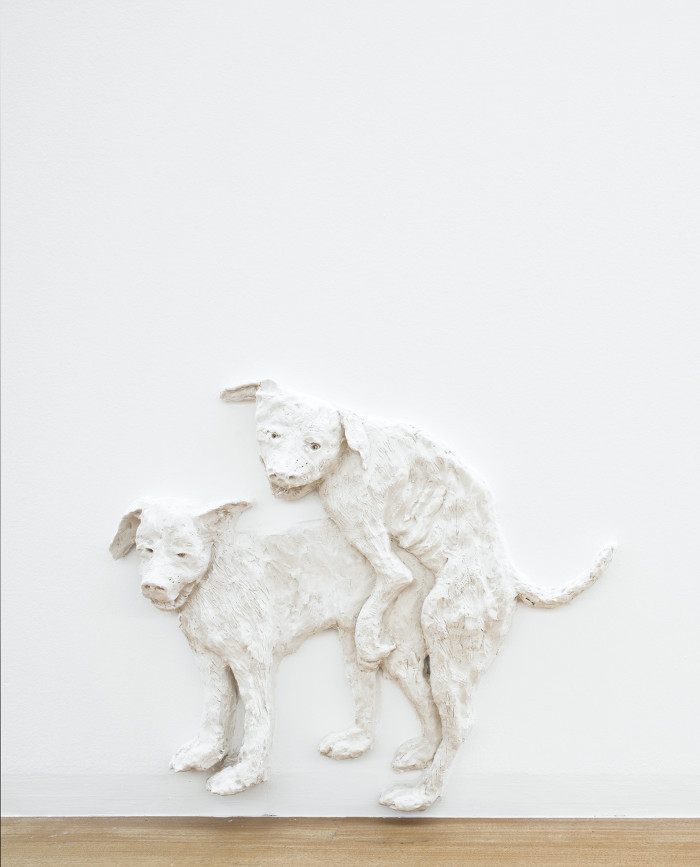Potential for Shame
Potential for Shame (2022) is a monumental installation comprising seven low and high wall reliefs in jesmonite, metal, and neon. Four remote-controlled mechanical cars move around the exhibition space and produce sounds in response to the presence of visitors thanks to an artificial intelligence system designed in collaboration with Julien Bouille, who did the robotic programming, and Pierre Dozin for the sound composition.
Presented in a more modest version under the title Splendor and Decadence of the Sirens at the New Space (2020) in Liège and then at Kunsthal in Ghent (2021), Potential for Shame intersects repressed sexualities and authoritarian figures. The subject of this installation is a result of the specific context of the New Space’s invitation, which was once home to the Liège judicial police warehouse, which greatly inspired the artist. Potential for Shame, the title of the installation, thus evokes the judgments made about free sexual practices that some police officers might be ashamed of in the eyes of their peers. But the title can also be interpreted in another way, the potential for shame can be embodied in the judging looks that accompany these practices, which "confront bodies with violence imposed by normative and punitive thinking," Aline Bouvy states.
By their subject and their appearance, the bas-reliefs refer to the monumental painting The Clear World of the Blessed by Elisàr in the villa Monte Verità in Ascona, Switzerland. It is the only trace of Clarism, a transgender utopian religion invented in the 1920s in Germany that advocated for gender equality and a return to nature through the emancipation of women and homosexuals. Potential for Shame responds to Urine Mate 2 and Strategy of Non-Cooperation VI, other works in Aline Bouvy's ensemble in the KANAL Foundation's collection dealing with naked male bodies, queer cruising practices and, more broadly, minorities. Another reference for the work is a series of high reliefs from a completely different context: that of the Athénée de Waha in Liège, a school built by a local philanthropist in the 1930s to give young girls access to secondary education. Despite the hypersexualization of teenage girls' bodies on the frieze – which was common at the time – the emancipatory symbol represented by the Athénée de Waha has greatly inspired Aline Bouvy.
Potential for Shame also echoes the invisibility of women in public space. The jesmonite urinals are a reminder of the numerical and visible domination of male urinals over those offered for women. Aline Bouvy considers them as "architectural protuberances", elements that are found in the city, outside, and physically affirm an overwhelming masculinity. However, in her installation, the urinals placed upside down are diverted from their phallic symbol: they even strangely take the shape of a vulva, operating a "queer reversal" (Denis Gielen, "Renversements queer," Cruising Bye, 2022).
In the center of the space, a ballet of cars embodies the domination of law and order over the entire public sphere and morality. The remote-controlled cars are programmed to reproduce the characteristic movements of police patrols encircling and dispersing during demonstrations. Undertaking choreographies autonomously, they stop as soon as visitors enter the room to interact with them. The artist highlights the exponential development of surveillance devices that support contemporary repressive systems. The sound produced by the cars oscillates between the song of the sirens met by Ulysses and police car sirens. It calls out and alerts us to a danger: that of increasing repressive control.


